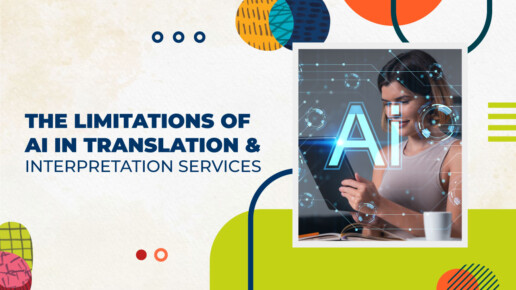The Limitations of AI in Translation and Interpretation Services
Artificial intelligence (AI) has advanced significantly in several industries recently, including finance, healthcare, and more. Services like translation and interpreting are not an exception, with AI-driven systems offering quicker and more affordable linguistic solutions. However, even while AI has unquestionably made these services better in many respects, it’s important to recognize the constraints and difficulties it still confronts in providing precise and nuanced translations and interpretations.
- Contextual comprehension
The limited ability of AI to properly understand context is one of the main problems it faces while translating and interpreting. Language frequently greatly depends on context to accurately express meaning. A human interpreter may quickly understand the nuances, colloquial idioms, and cultural differences that AI models, despite their sophistication, may find difficult to grasp. This inability to understand context might result in translations that are grammatically accurate but completely miss the mark.
- Cultural Sensitivity:
Culture and languages are closely intertwined. A word or phrase that has one meaning or emotional impact in one language may have another in another. AI interpreters lack the cultural sensitivity that humans do. A company’s reputation or relationships with clients and customers may suffer as a result of translations that are culturally insensitive or disrespectful.
- Complex Languages:
In terms of complexity, not all languages are created equally. Some languages have complex sentence structures, nuanced vocabulary, and complex grammatical rules. AI might find it difficult to handle this complexity, resulting in translations that are improperly phrased or grammatically incorrect. On the other hand, human translators can handle these subtleties with ease.
- Industry-Specific Expertise:
Numerous translation and interpretation services demand expertise particular to the sector. Scientific papers, technical manuals, legal documents, and medical records all require a thorough comprehension of specific vocabulary. AI might lack the knowledge necessary to correctly translate or interpret in these fields, whereas human professionals can offer accurate, context-sensitive translations.
- Expression of Emotion:
Language can also be used to convey tone, emotions, and subtleties like sarcasm or comedy in addition to providing information. The emotional nuance found in speech or text is sometimes difficult for AI to capture, resulting in translations that either lack the intended emotional impact or express incorrect feelings.
- Ethics-Related Issues
Tools for translation powered by AI might not always respect confidentiality and privacy. Relying only on AI can raise serious ethical issues when working with private or sensitive documents.
- Ongoing Education:
Human interpreters always advance their abilities through practice and education. While AI is always changing, it may not learn and adapt as quickly as people. As a result, AI may find it challenging to keep up with rapidly changing languages or dialects.
Examples and Case Studies
- Google Translator’s Infamous Failures:
One of the most popular AI-powered translation programs, Google Translate has experienced some well-publicized translation errors. One noteworthy event entailed converting “Russia” into “Mordor” and “Russians” into “occupiers” in Ukrainian. These mistakes demonstrate how poorly AI can handle and comprehend culturally and politically sensitive topics.
- Misinterpretations in Legal Documents:
Precision is crucial when translating legal documents. AI-based translation algorithms could have trouble understanding the subtleties of legal jargon and context. There have been instances where mistakes and expensive legal challenges resulted from AI translations of legal documents.
- Healthcare Miscommunication:
Accurate communication in healthcare settings is essential. Medical terminology misunderstandings or errors in translation might have devastating repercussions. The accuracy and seriousness of medical information may not be properly conveyed by AI translation technologies, thus putting patients’ health at risk.
- Political Speeches and Diplomacy:
Political and diplomatic speeches frequently use nuances and nuanced terminology. AI may have trouble understanding the finer points of diplomatic language. A nuanced diplomatic speech, for example, can be misinterpreted by an AI interpreter as being hostile, escalating diplomatic tensions.
- Literature and Poetry:
When translating poetry and literature, it’s important to keep the original work’s creative and emotional qualities in mind. The profundity, metaphors, and poetic quality of literary writings are sometimes lost in AI translations, which detracts from their original beauty and significance.
- Business and Marketing Copy:
Marketing materials used in the business world need to successfully communicate the brand’s message to the target audience. Artificial intelligence (AI) might not comprehend the cultural quirks and emotional appeal required for persuasive marketing content, resulting in translations that are ineffective or even offensive to potential customers.
In conclusion, despite the fact that AI has made significant strides in the area of interpretation and translation, it still has flaws that prohibit it from completely replacing human experts. Human translators and interpreters continue to be crucial for companies and individuals seeking accurate, contextually aware, and culturally sensitive language services. AI can surely facilitate and speed up the process, but human touch and comprehension are crucial for successfully overcoming language barriers and communicating the subtleties of communication.

